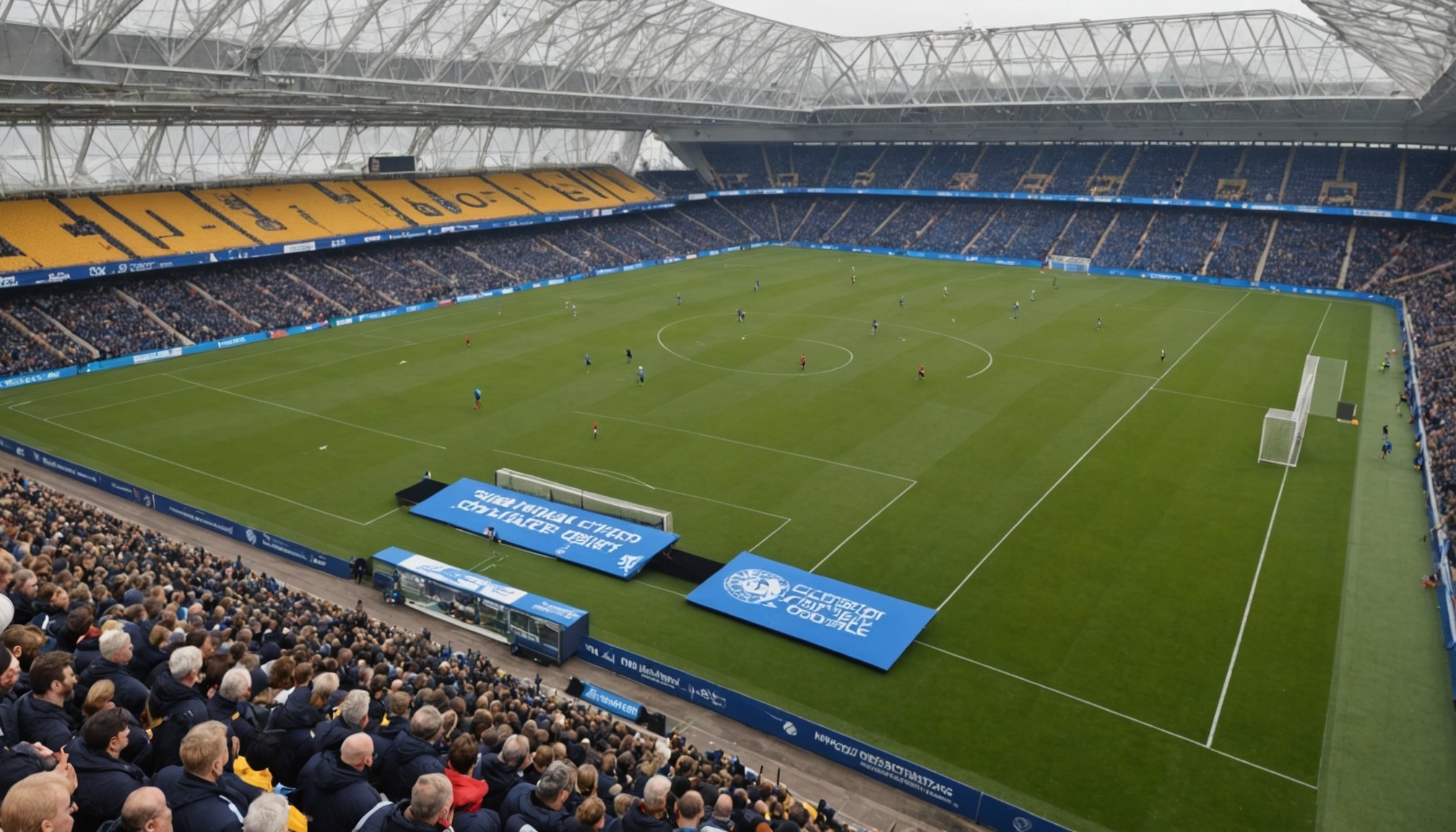Strategies for Climate Adaptation
Adapting to diverse climates presents significant challenges for UK sports teams competing internationally. Understanding and addressing these issues is vital for maintaining performance levels in varied environments.
One key strategy is pre-event acclimatization, which is essential for athletes to perform optimally. This process involves spending time in conditions similar to those of the competition venue, allowing athletes to adjust to temperature, humidity, and altitude changes. Research shows that pre-acclimatization can improve endurance, reduce fatigue, and enhance overall performance.
Additional reading : Unlocking performance: the benefits of integrating sports psychology in training for uk snooker players
Practical training adjustments are also crucial. Teams are encouraged to replicate competition climates through specific drills and exercises. For example, using indoor facilities to mimic outdoor conditions allows athletes to adapt without environmental distractions. Tailored training regimens that consider temperature and humidity levels can significantly bolster athletes’ readiness for global events.
Implementing climate adaptation strategies ensures that UK sports teams remain competitive. By focusing on acclimatization and specialized training, teams not only prepare for immediate challenges but also develop resilience for future competitions. Addressing environmental factors methodically, athletes are better equipped to maintain high performance levels, regardless of the setting.
Also to discover : Effective techniques for uk athletes to overcome homesickness during training camps
Equipment Selection for Climate Resilience
Careful consideration of sports equipment is critical to ensuring UK sports teams are resilient to varying climates. Selecting the right gear can significantly enhance performance and comfort, especially when facing extreme weather conditions.
Choosing Temperature-Appropriate Gear
Selecting temperature-appropriate gear means adapting to both hot and cold conditions. Apparel with built-in heating or cooling technologies can help maintain optimal body temperature during competitions. This adaptation enhances performance and reduces fatigue, keeping athletes comfortable in diverse climates.
Utilizing Advanced Materials
Incorporating advanced materials in sports gear can offer protection and flexibility. Materials that wick moisture away or provide thermal insulation allow athletes to perform consistently regardless of unfamiliar environmental conditions. Weather-resistant sports gear, like windproof jackets or waterproof shoes, helps in managing rain and wind exposure effectively.
Customizing Equipment Based on Environmental Conditions
Tailoring the choice of sports equipment to match specific climate scenarios is prudent. For events with heavy rainfall, opting for gear designed to cope with wet conditions can prevent injuries and maintain efficiency. Equipment like hats or special sunglasses can be critical in sunny or hot climates to prevent sunburn and glare, ensuring athletes can focus solely on their performance.
Training Methods to Counter Weather Impacts
Preparing for varied weather conditions is essential for UK sports teams aiming for international success. Implementing innovative training methods can effectively bolster teams’ performance. Indoor training facilities play a crucial role by simulating harsh environmental conditions without real-world distractions. This approach enables athletes to refine their techniques and build stamina for specific climates.
To enhance environmental adaptation training, teams are now utilizing cutting-edge technology and data analytics. These tools monitor weather impacts on training sessions, providing valuable insights that inform adjustments in training regimens. By using detailed environmental data, teams can tailor their practice sessions to improve readiness for diverse climates.
Case studies have highlighted successful training adjustments by UK teams. For instance, a prominent football team recently employed virtual reality to mimic high-altitude conditions. The outcomes demonstrated improved lung capacity and overall endurance. Another example showed a rugby team optimizing their hydration strategies based on precise weather data, thus maintaining enhanced performance throughout a tournament held in humid conditions.
By embracing novel training techniques and technology, UK sports teams can adapt more proficiently to weather impacts, ensuring they remain competitive on the international stage.
Case Studies of UK Sports Teams
Examining UK sports team case studies reveals fascinating insights into success stories in sports adaptation. UK teams have demonstrated remarkable resilience and ingenuity in varying climates, leading to notable performances on the international stage.
Team Performance in Extreme Conditions
A prime example is a British cycling team that excelled in the scorching conditions of a recent global event. Employing advanced climate adaptation strategies, the team achieved podium finishes. Their approach included pre-competition acclimatisation, using controlled hot environments to simulate race-day temperatures, leading to enhanced endurance and performance.
Innovations in Equipment Adaptation
Another inspiring story showcases a track and field team that revolutionised their equipment for competitions in humid locations. They incorporated weather-resistant sports gear, like moisture-wicking outfits and cooling vests, to maintain efficiency despite challenging conditions. These innovations played a crucial role in their series of medal-winning performances.
Lessons Learned and Recommendations
The experiences of these teams underscore the importance of planning and executing climate adaptation strategies. Embracing tailored training methods, investing in advanced equipment, and learning from past successes can drive continued improvement. Teams that view adaptation as an ongoing process stand to gain a competitive edge and ensure enduring success in future competitions.
Expert Opinions on Climate Strategies
The insights from sports science experts highlight critical strategies for effective climate adaptation, particularly for UK sports teams. Their recommendations underscore the necessity for multidisciplinary approaches that integrate sports science, environmental studies, and innovation.
Experts stress the importance of adaptive climate adaptation strategies tailored specifically to each sport and climate scenario. This involves not only understanding environmental conditions but also strategizing around them. A growing focus is on using data-driven insights to anticipate and mitigate the impact of climate variations on athletic performance.
One compelling recommendation from these experts includes the incorporation of sports science recommendations to refine strategies, such as advanced monitoring systems to track physiological changes in athletes during acclimatization. These methods provide a clearer understanding of how varying climates affect body responses and help optimize training regimens.
Looking to the future, experts predict increased collaboration between disciplines to tackle the challenges posed by a changing climate. With evolving climate scenarios expected, future trends will likely revolve around innovations in sports climate adaptation, ensuring teams are not only resilient but also proactive in their preparations. This collaborative effort is essential for maintaining competitive performance and athlete wellbeing in international competitions.
Implications for Future Competitions
Adapting to the evolving demands of future sports competitions is critical for UK sports teams. With changing climate scenarios increasingly impacting international events, teams must stay ahead by actively incorporating proactive measures. Conditioning athletes to handle shifting climates not only supports their wellbeing but also enhances their competitive edge on the world stage.
As climate unpredictability grows, understanding potential effects ensures that squads are armed with the right strategies. The need for climate readiness in sports has never been greater. By employing comprehensive training methods and meticulously tailoring equipment to suit diverse environments, UK sports teams can maintain top-tier performance.
Strategies for continuous improvement and adaptation include integrating the latest technology for precise climate monitoring, enhancing our ability to forecast conditions and adjust accordingly. Seamless application of these insights into training and competition prep allows for a forward-thinking approach to sports management.
For true climate resilience, teams should foster innovation and adaptation as cornerstones of their competitive strategies. This requires a consistent blend of sports science insights and flexible planning. Emphasizing proactive adaptation to looming climate changes creates new opportunities for enhanced performances in future competitions. This not only benefits athletes but secures the UK’s standing in the global sporting arena.











